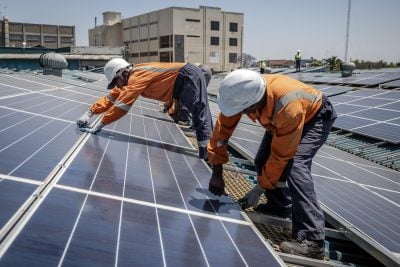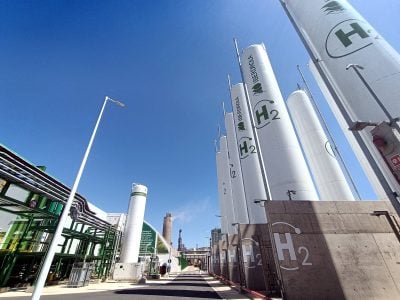Guinea is set to become the world’s third-largest iron ore producer, behind giants Australia and Brazil, as investments of billions of dollars pour in.
With around $25bn in foreign direct investment proposed and scheduled over the next five years, the small West African state of Guinea is about to undergo something of an economic revolution.
Guinea is not the only country in the region that is expected to share in the mining boom. Experts are forecasting that the 20 iron ore mines due to open by 2015 in Cameroon, Guinea, Liberia and Sierra Leone could produce as much as 600mt a year.
Resilient demand for iron ore, largely from China, has helped maintain prices during the current commodity market turbulence. Demand for iron ore is expected to grow at a ferocious pace worldwide, even if Chinese growth slows from its current rate to nearer 7%.
China produced 900mt and imported 618mt of iron ore in 2010; the country consumes about half of the world’s iron yet produces only around a third. Consequently, China is focused both on securing its imports and diversifying its supply away from Australia, Brazil and India.
This has so rattled one of the world’s biggest iron ore producers, Australia, that the Sydney Morning Herald has expressed considerable anxiety over the impact this will have on Australian iron ore export. Iron ore currently accounts for 25% of the country’s exports. Guinea, possessing by far the largest bauxite reserves in the world as well as, at Simandou, the world’s third-highest quality iron ore reserves, has seen some of the largest mining players flocking to invest.
New mining code
It had been a nervous time for miners in Guinea as they had been waiting with bated breathe to hear the outcome of the country’s new mining code which was finally ratified on 9th September.
Now much of the ambiguity has been dispelled. Miners know that the government will be taking a free 15% share in projects with the option to purchase a further 20% stake – a doubling of the state provision under the old 1995 mining code.
Mines Minister Mohamed Lamine Fofana has said that he will also be reviewing all mining licences to ensure that they are in the best interests of the people of Guinea.
Fofana has already shown he has the will to act. He rescinded China International Fund’s (CIF) deal with the former governing junta which reportedly sold all rights to Guinea’s resources for $7bn.
CIF maintains a financial interest in Bellzone, an iron miner in Guinea, and the company is investing $2.7bn to build a 286km railway and port, of which it will cede 10% to Bellzone, and for which it will receive right of refusal for all ore mined, to be sold at market prices.
Bellzone’s Kalia project in Guinea is scheduled to open in 2012 and produce 50mt of iron ore a year by 2018: the resource estimate has been revised upwards twice and stands at 6.16bt. The company’s Forécariah site is due to produce 10mt a year by 2013 and is a 50-50 joint venture with CIF.
Also operating in Forécariah, as well as Kérouané, is the West African Iron Ore Corporation, a junior benefiting from an excellent location and high-grade ore.
Simandou’s potential
Simandou is the largest-known unexploited iron ore deposit in the world, comparable to the vast Pilbara deposit in Australia in terms of scale and quality.
Brazil’s Vale paid $2.5bn last April for its share in the Simandou riches, taking a 51% stake in the Beny Steinmetz Group Resources Guinea (BSGRG). BSGRG purchased half of Simandou, all of which had previously belonged to Rio Tinto, from the Guinean government. The government had justified the move saying that Rio had been too slow to develop the site, a fact Rio has disputed.
Drawing a line under this disagreement, Rio Tinto struck a deal with Guinea’s government back in April, paying $700m and handing over a 35% stake in order to remove any ambiguities over its licence position before it invests further billions in the project into which the company has already sunk some $1.5bn to date.
Rio entered into a joint venture in August 2010 with its largest shareholder, Chinalco, to develop Rio’s half of the Simandou concession. Chinalco will pay $1.35bn for a 44.65% stake in the project which is scheduled to enter into production in 2015. Production is expected to commence at around 70mt per year, rising as high as 170mt in the future.
Simandou South is the site of the Zogota mine, which Vale aims to implement first whilst it continues exploration of Simandou North and Blocks 1 & 2. Production is expected to commence at Zogota next year at around 2mt, rising to 15mt by 2014 and 50mt by 2020.
Vale plans to invest $5bn in Guinea and Rio Tinto’s investment is likely to be in the $5bn-$10bn range.
Rising demand, prices
Rio estimates that 100mt of extra iron ore production will be required each year for the next eight years, if global demand is to be met.
According to UNCTAD, global production was at 1.6bt and exports at 955mt in 2009 so one can see what the scale of the increase required. Production in 2009 rose by about 75mt (and by an estimated 81mt in 2010). In the short term it seems likely that the market will tighten before sufficient new supply comes online.
Since the breakdown of the benchmark system, whereby the largest producers (BHP Billiton, Rio Tinto and Vale) would negotiate with the world’s largest steel producers to set prices on an annual basis, prices have been set quarterly based on a rolling average. The new system has seen prices rise above a record $170/t.
BHP estimates global supply will rise by 4% a year, which means that 2010’s world output of 1.42bt will rise to 2.44bt by 2025. Production grew on average by 5% a year between 2000–2010 and is unlikely to stall much before significant new supplies arrive in 2014–2015.
Uncertainty
BHP appears to be treading water prior to the conclusion of the mining licence review before continuing to invest in its $5.2bn Sangaredi alumina project in Guinea. The company and its co-owning partners have already invested $700m in the project.
Whilst miners will grumble, mostly in private although some, like Rusal, publicly, about the new mining code and changes to taxes and royalties, there can be little doubt that the new regime, whilst less overtly generous, is significantly more transparent and includes a number of measures to tackle corruption which will enable it to conform to the Extractive Industry Transparency Initiative.
Infrastructure
In order to abate what miners refer to as resource nationalism, miners are keen to demonstrate to their host nations that they take their wider responsibilities seriously.
The growing significance of Guinea to the mining community, and its desire to reach mutually satisfactory accommodations with the government has led to a number of major development initiatives. Guinea has a plethora of significant infrastructure projects under way that will provide large numbers of jobs to the 10m inhabitants – many of whom live on less than $1 a day – as well as hugely improve the prospects for trade internally and across the region.
Rio plans to build a 700km railway across the country in partnership with the government who will take a 51% stake for 15–20 years, at which point full ownership will pass to the government. The railway will connect with a new port near Conakry and is expected to carry 95mt of iron ore a year.
Similarly, Vale in February began building a 660km railway from Conakry to Kankan, a line which has not operated since 1983, which will open up development in the east of the country. An agreement between Vale and the government of Liberia was reached in August to build a new railway line from Simandou through Liberia connecting the project with a proposed new port.
Until the completion of the new railway and port, the deal allows Vale access to existing Liberian infrastructure. Vale also agreed to refurbish the Mount Coffee Power Plant in Liberia.
Given the precedent of Rio Tinto’s deal with the government, it is thought likely that Vale will follow suit and will reach an agreement with the government along similar lines.
Promising times
The rapid and escalating demand for iron ore is resulting in a greater willingness by the mining sector to invest in West Africa and the much-improved political situation in Côte d’Ivoire, Guinea and Liberia has helped create a suitable investment environment for economic and social development.
There appears to be no bitterness regarding the rescinding of the CIF deal as Guinea’s President Alpha Condé recently visited China where he spoke to mining giant Chinalco’s president Luo Jianchuan regarding the potential development of bauxite mining in the country. The Guinean government and China Power Investment Corp (CPIC) are also discussing a $5.8bn deal to build a 340MW coal-fired power plant in Guinea, a bauxite mine in Boffa, an alumina refinery and a deep water port. CPIC owns bauxite permits in the country, with estimated reserves of 900mt.
Russian aluminium giant Rusal mines 40% of its bauxite ore at the Kindia mine in Guinea and has an alumina smelting plant at Friguia, which it acquired along with the Alumnia Co of Guinea for $19m in 2006 despite it being valued at $257m, according to ex-President Camara. Rusal disputes this claim. However, there remain a number of contentious issues between the government and the company which are yet to be finally resolved.
The explosion of investment in West Africa in general and Guinea in particular are a phenomenal opportunity for the region. Guinea’s riches are not confined to iron ore and alumina either.
In addition to the gold mines of AngloGold Ashanti, and the presence of uranium and diamonds, Hyperdynamics Corporation is exploring for offshore oil.
The situation in Guinea is still somewhat volatile. The President was subject to two assassination attempts in July and riots in the last week of September saw three people killed as well as hundreds of arrests. Elections for the legislature are scheduled for 29th December.
However, things are much improved since the massacre of 156 protesters two years ago. The country’s first democratically elected government seems resolved to drive hard but fair deals, such as a royalty tax that varies with commodity prices, which allows the government to share in any price rally without penalising miners in leaner times.
The country’s rejoining of the EITI to tackle corruption and to uphold the principles of best practice in the resource sector is excellent news.
Miners may be unhappy with some elements of the new code but the quality and scale of the mineral riches available mean they are unlikely to be deterred from investing.
The keenness of a government to rebuild the nation, the scale of investment by some of the world’s largest companies and a new compact of win-win cooperation between the two point to a more prosperous future for the people of Guinea.
As Minister Fofana remarked upon the launching of the new mining code, “The freezing of Guinea’s resources is over.”
Want to continue reading? Subscribe today.
You've read all your free articles for this month! Subscribe now to enjoy full access to our content.
Digital Monthly
£8.00 / month
Receive full unlimited access to our articles, opinions, podcasts and more.
Digital Yearly
£70.00 / year
Our best value offer - save £26 and gain access to all of our digital content for an entire year!
 Sign in with Google
Sign in with Google 


